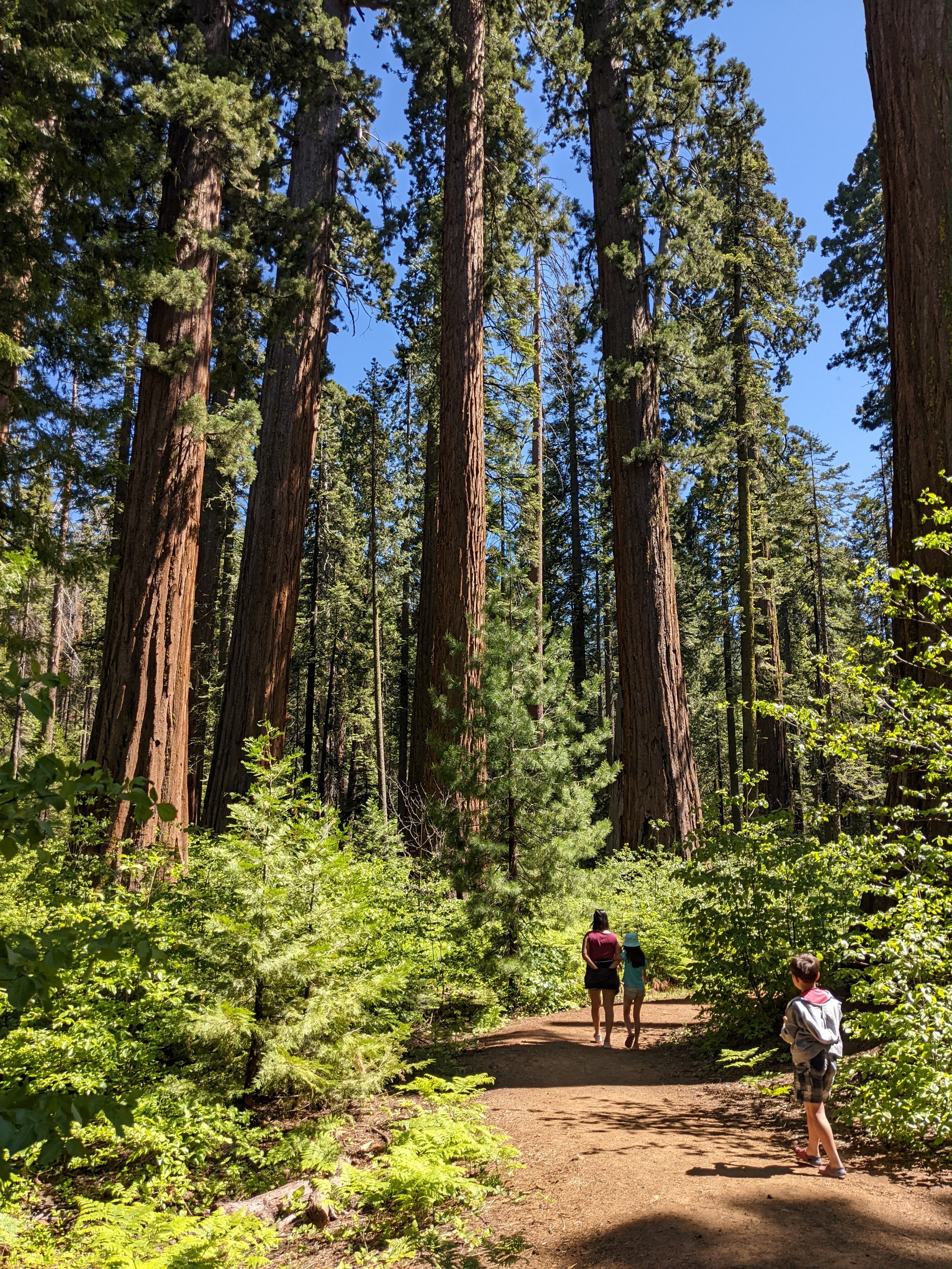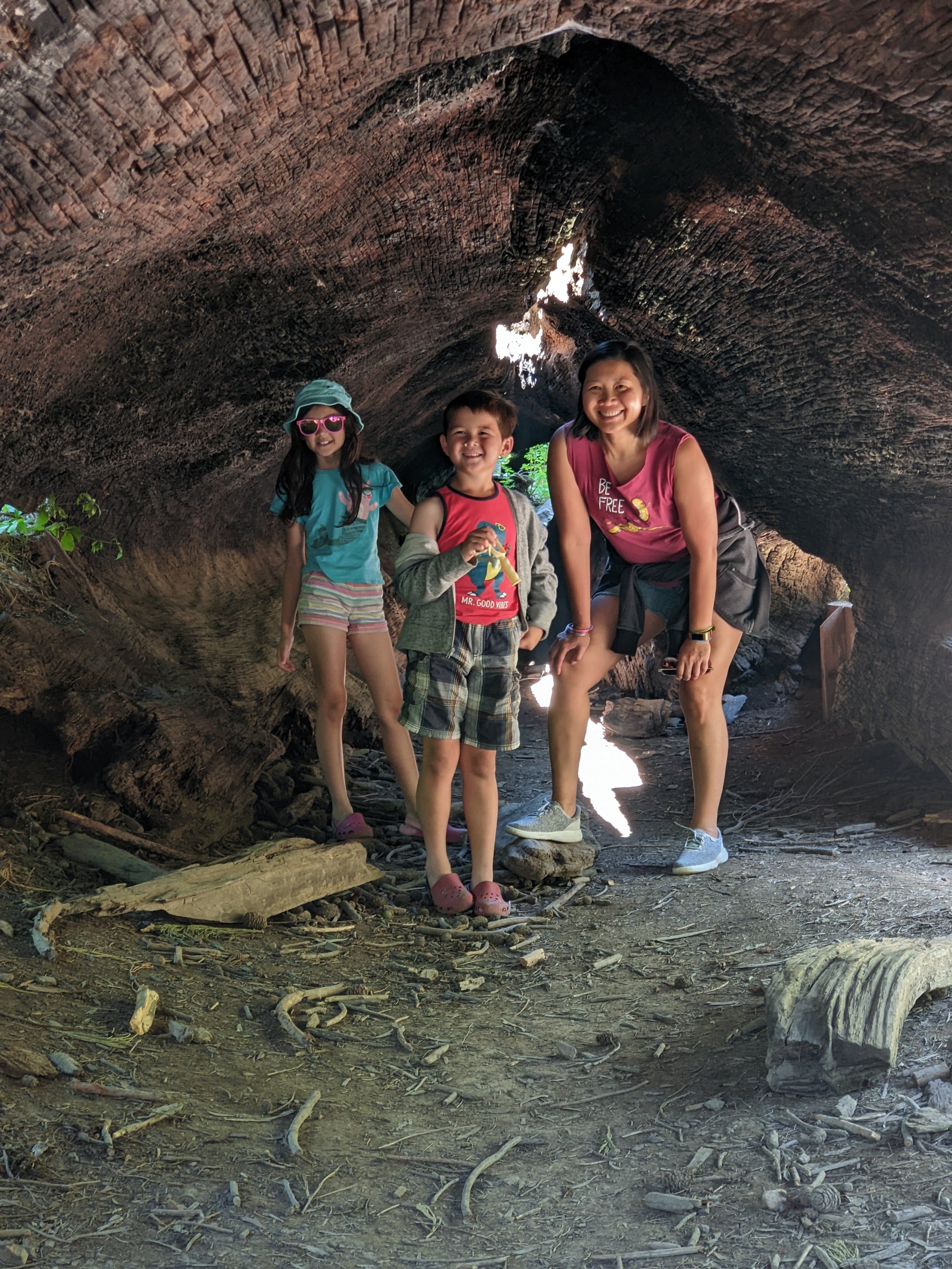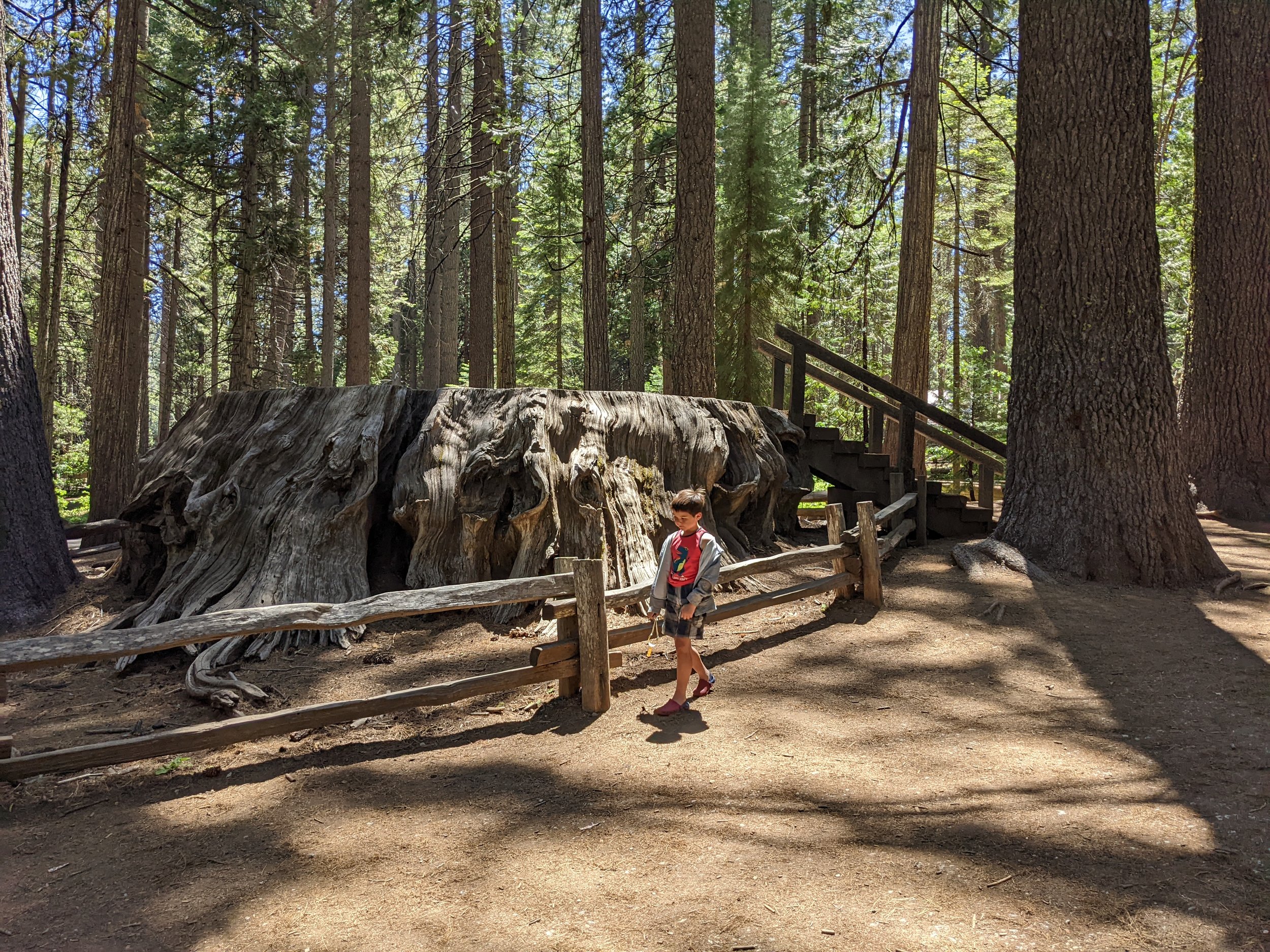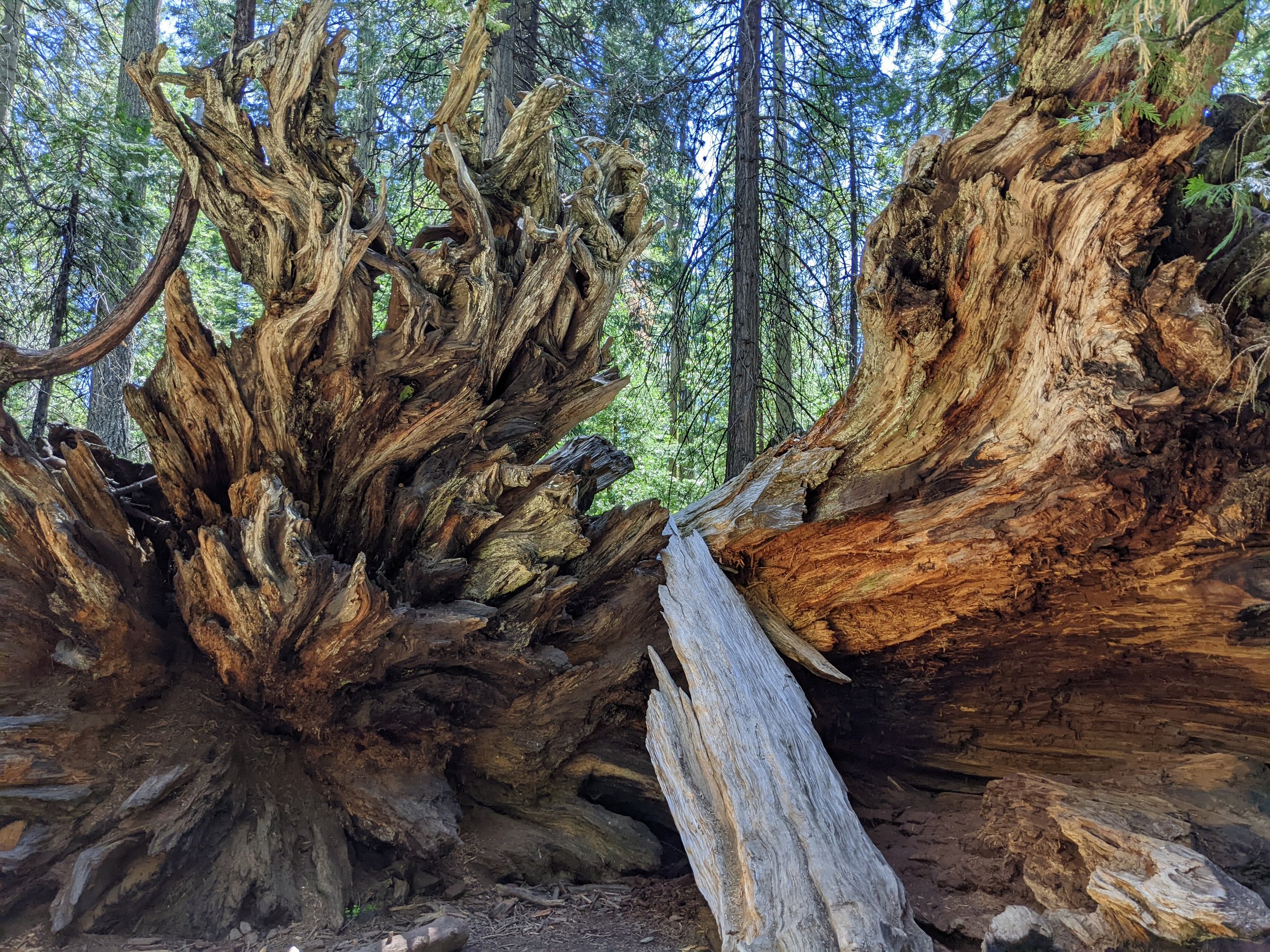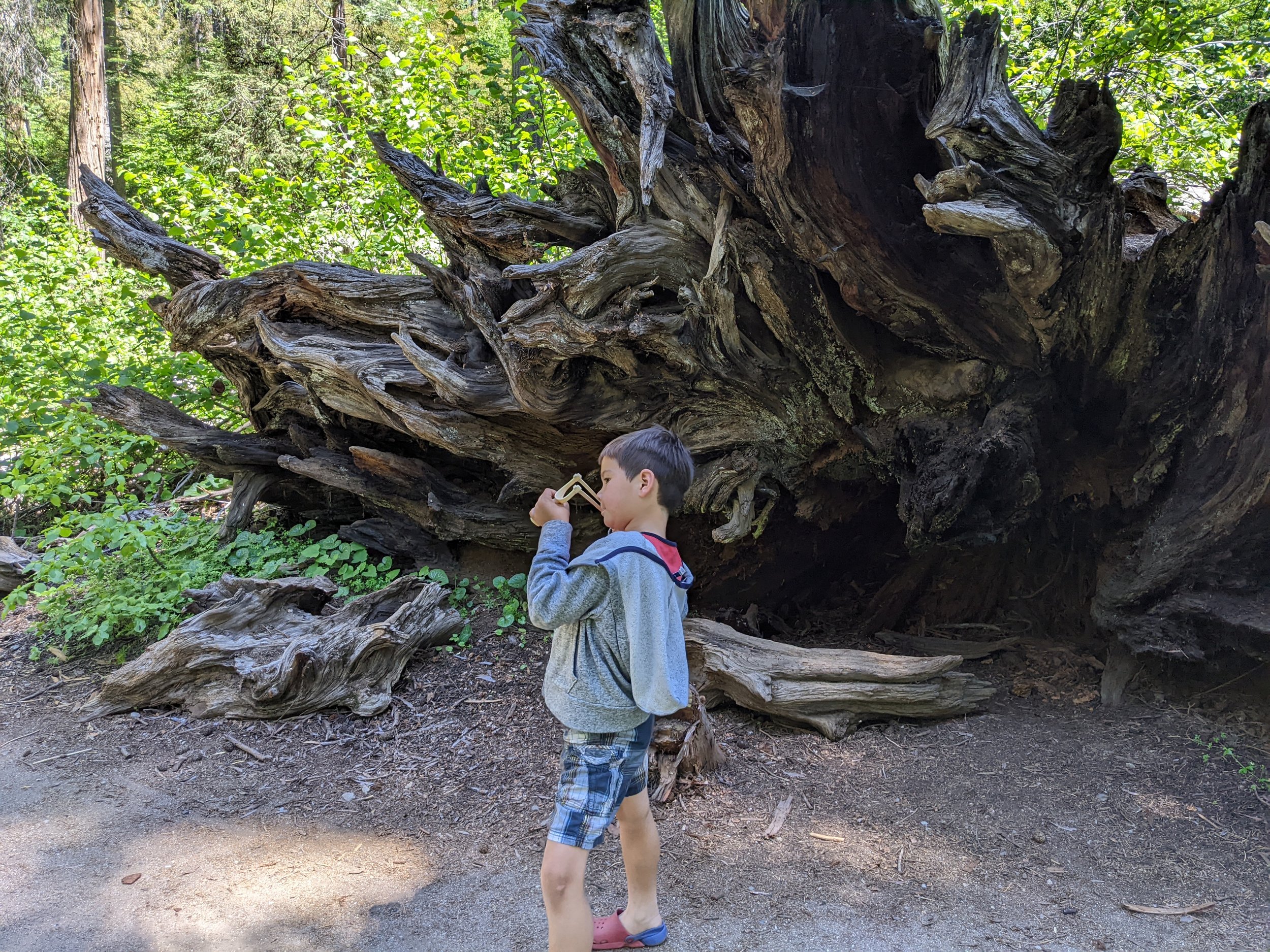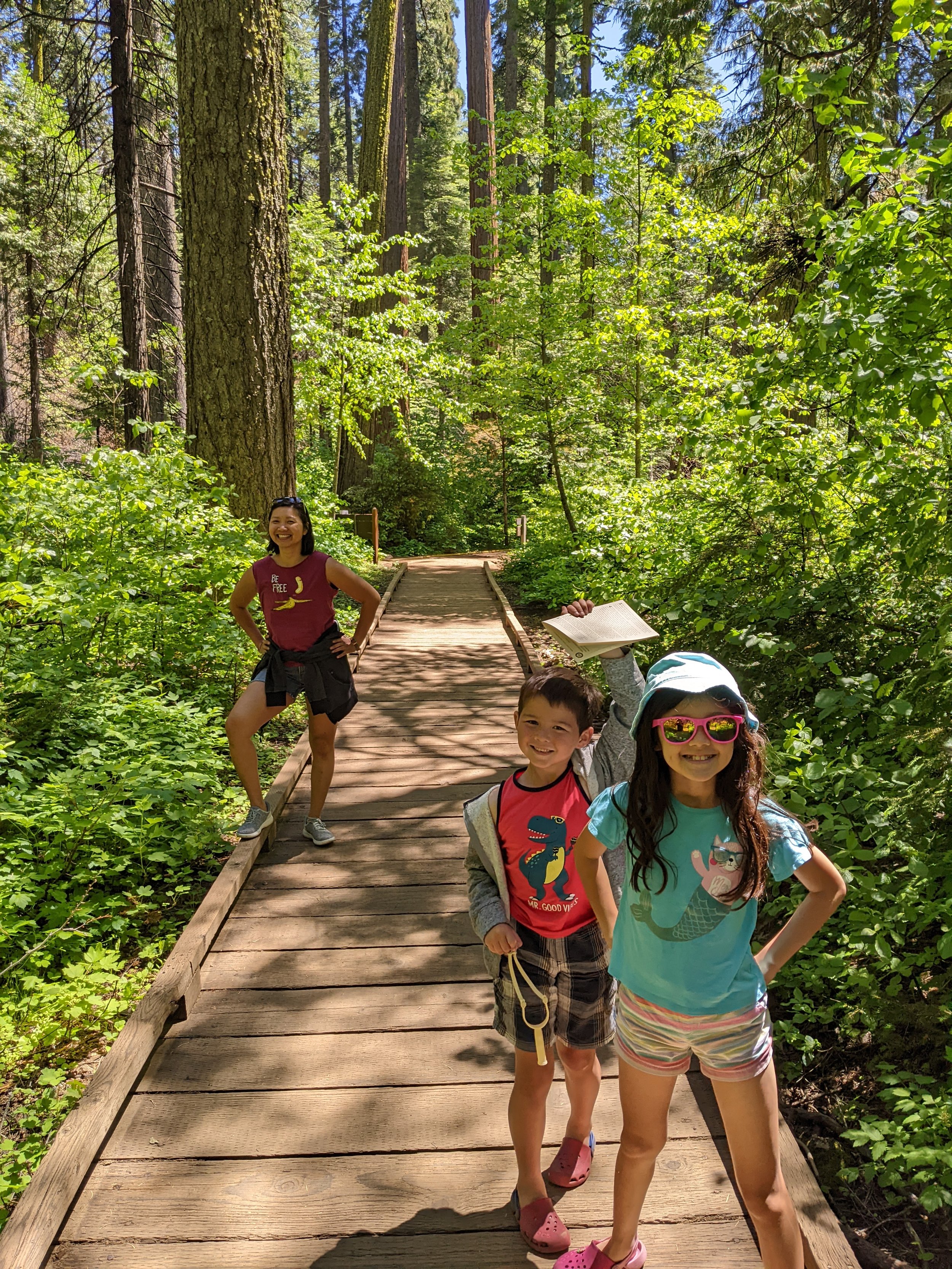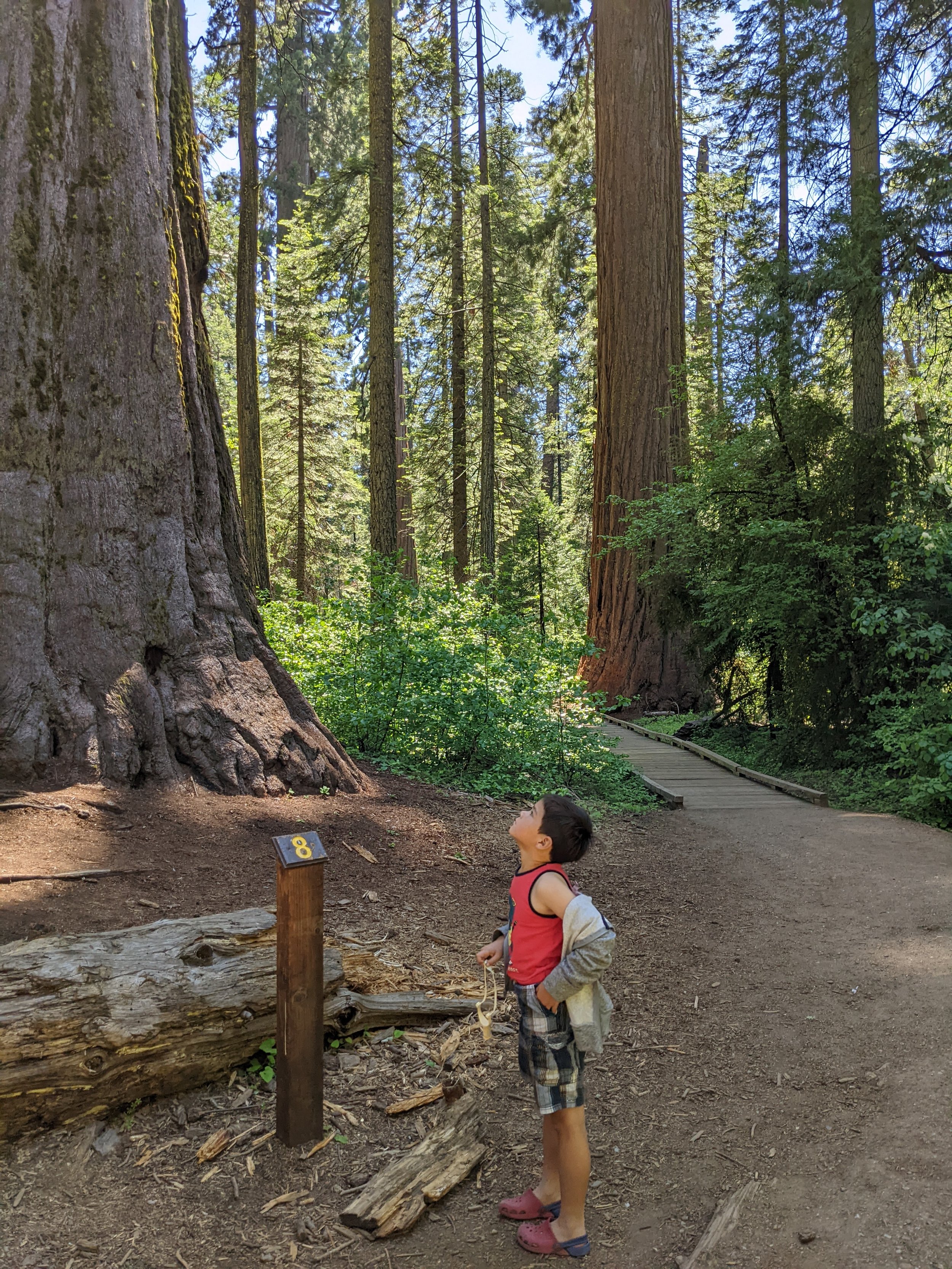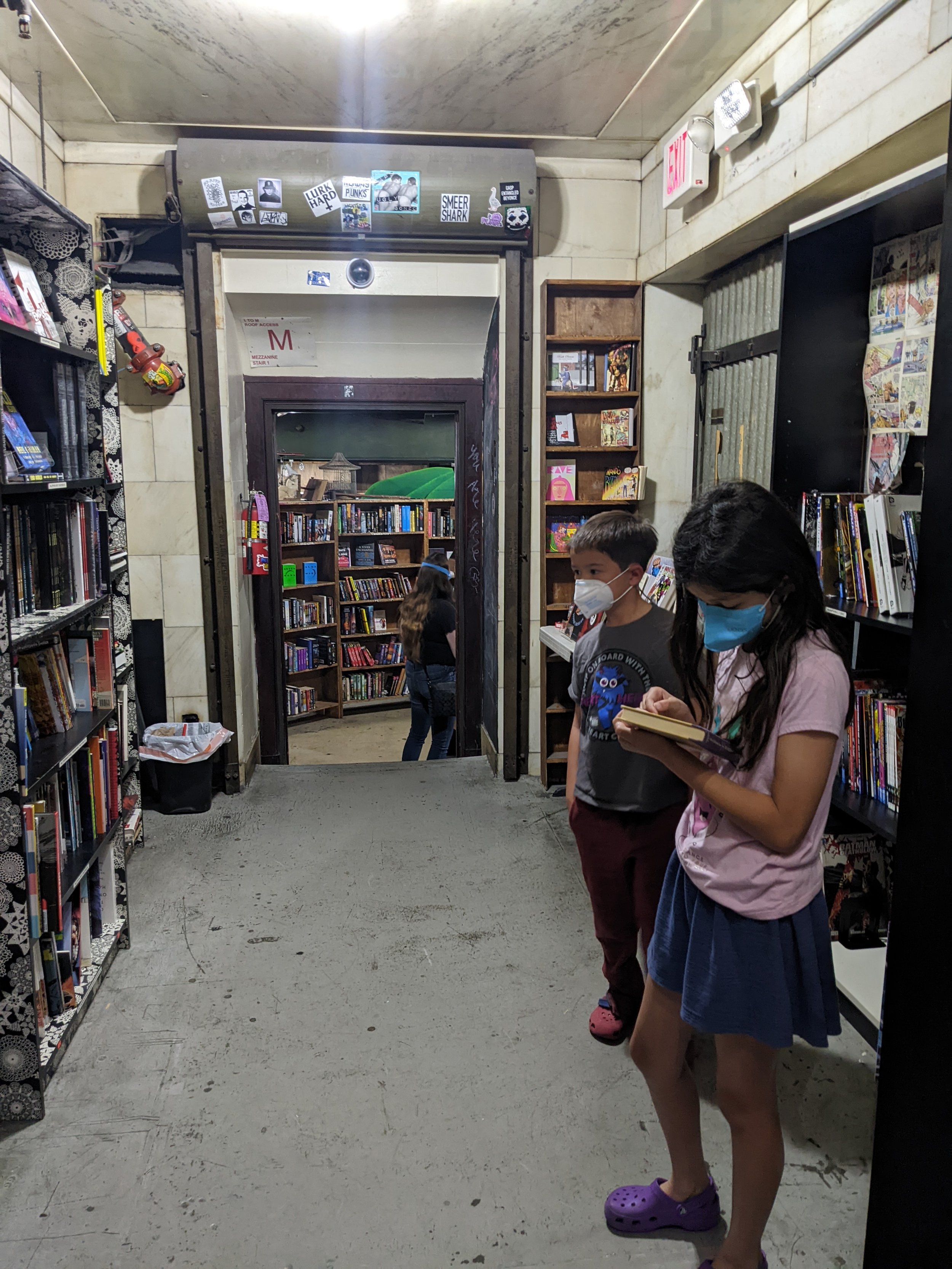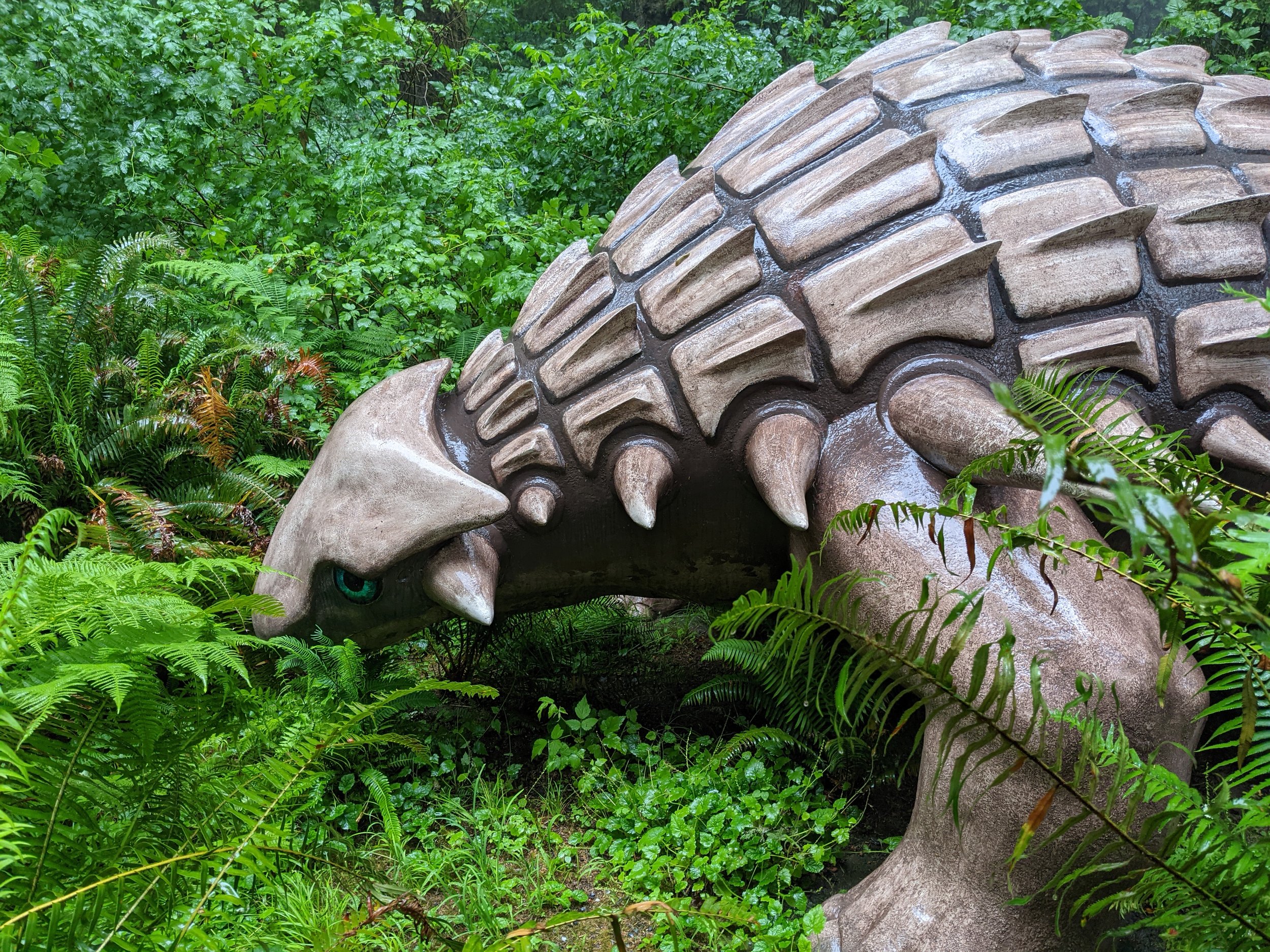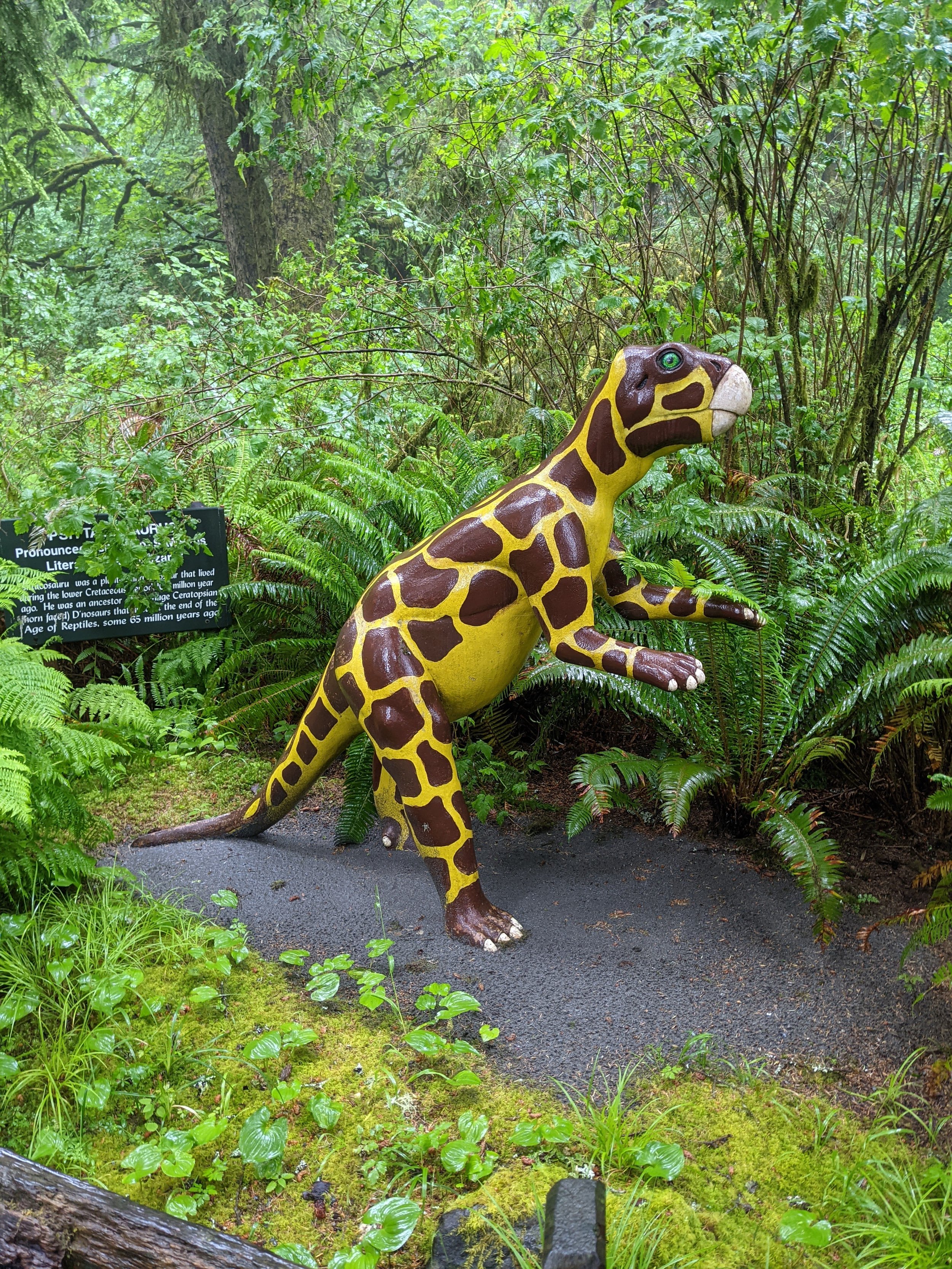An afternoon at Big Trees
Dear Reader,
I am happy to report that Calaveras Big Trees State Park sits a scant three miles past the town of Arnold, California and is home to two groves of Giant Sequoias. I am delighted to tell you that ample, affordable, highway-close parking makes them the most accessible in the Sierras. I am elated to let you know that being a state park translates to remarkably less crows than one might find in a national park. I am overjoyed to let you know that all it took was a mild hike in the North Grove to awaken a curiosity in me that sent me to do some research on the ancient giants. I am disturbed to let you know that my mood shifted with just a few clicks. I was prepared to find out how vulnerable they were at the hands of humans at first discovery. However, I was horrified to find out how precarious the relationship remains. Thanks to the work of the Giant Sequoias Lands Coalition and the alarm bells they have been ringing, I found out things are not so rosy in the Sierras. Putting it as simply as possible, the Sequoias may be looking at their last few summers on planet Earth if things do not change.
As the story goes, in the spring of 1852 backwoods hunter Augustus T. Dowd stumbled into an unfamiliar part of the forest as he was chasing down a wounded grizzly bear. Expecting to locate his quarry, he was flabbergasted to instead find himself staring down a three-hundred foot Giant Sequoia. Keep in mind, this tree was bigger than any person of European descent had ever seen. Also keep in mind that people of European descent have a long track record of exploiting when they should have just been admiring. And with that, inside of a year others had learned of Mr. Dowd’s discovery and descended on the grove to do what comes natural to them. Today, the only thing left of that tree is a mammoth stump where that glorious sequoia should be. Mercifully, only a few others in the grove suffered the same fate before people began to see the folly of their ways. By 1931, the groves were integrated into what is now known as Calaveras Big Trees State Park. This has protected them from being exploited and extracted. However, their vulnerability because of human endeavors is far from over.
All that’s left of the Discovery Tree
Sequoias are capable of growing and reproducing in exactly one place on planet Earth, the western slope of the Sierra Nevadas. It’s here that they have been able to achieve the distinction of being the largest living object on the planet, capable of growing to heights of three-hundred feet with a base diameter of thirty feet. Part of their success in achieving three-thousand year life spans is because of their ability not just to withstand the occasional, naturally occurring forest fire but actually prosper because of it. With a bark that is dramatically thicker than ordinary trees, Sequoias are able to maintain a supply of water to their crowns in the event of a low intensity burn. They rely on the heat produced to get them to release their seeds. With the understory of the forest floor cleared out by the occasional blaze, seedlings can establish themselves and bring about the next generation. To call them anything but marvels of nature would be an understatement.
Despite their tenacity, thanks to a perfect storm of well-meaning, but naive forest management compounded with a healthy dose of science denial, they are more vulnerable today than when Augustus T. Dowd wandered into the grove. For the past one hundred years, the commonly accepted policy was to completely extinguish forest fires. The idea being that by stopping small fires, trees would be protected. However, this approach has led to shocking levels of excess fuels that should have burned off naturally. Compounding that, because of a willful ignorance towards human beings' role in climate change, hotter and longer periods of drought have become far too commonplace in California. Because of the accumulation of dry, excessive fuels when fires do start, they are now supercharged and capable of burning the sequoia’s canopies. This is something that would never have happened with a low intensity burn. As it stands right now, the sequoias are just a few bad wildfire seasons away from being wiped off the face of the Sierras. Think this is just another situation where your dear narrator is catastrophizing? It’s estimated that nineteen percent of sequoias are now nothing more than memories because of the 2020 and 2021 wildfire seasons.
Thankfully, the work to preserve the remaining trees has begun. The Giant Sequoias Lands Coalition was formed in 2021 and brings together a number of organizations at the Federal, Tribal, State, and local levels in order to help preserve this unique ecosystem. It is because of this coalition that the alarm bells are ringing and word is getting out about the Sequoias' plight. According to the Giant Sequoias Lands Coalition’s 2022 progress report, they report to have overseen thinning efforts and prescribed burns on 36 out of 80 groves. In addition, they have planted almost a quarter million trees of all varieties. Public outreach has been a goal with more than 10,000 stories in both print and digital media. I know for a fact if it weren't for their efforts, this is one person who would have been completely ignorant of the situation and would not be repeating the message.
Jacque considering a big tree
Calaveras Big Trees State Park
1170 CA-4
Arnold, California 95223
(209) 795-2334
Interested in helping the Giant Sequoia Lands Coalition in their work? They can use your help.
This post is based on a visit on June 13, 2022
Sources
A Guide to the North Grove Trail
The Giant Sequoias Lands Coalition
Giant Sequoias Face New Threats
Giant Sequoias Face Looming Threat from Shifting Climate Change
Meet the Giant Sequoia, the ‘Super Tree’ Built to Withstand Fire
Giant Sequoias Lands Coalition Gains Momentum
How Climate Change is Now Threatening the Survival of Fire-Adaptive Sequoia Trees
Wildfire Kills Unprecedented Numbers of Large Sequioa Trees
A Progress Report for Saving the Sequioa Trees 2022

